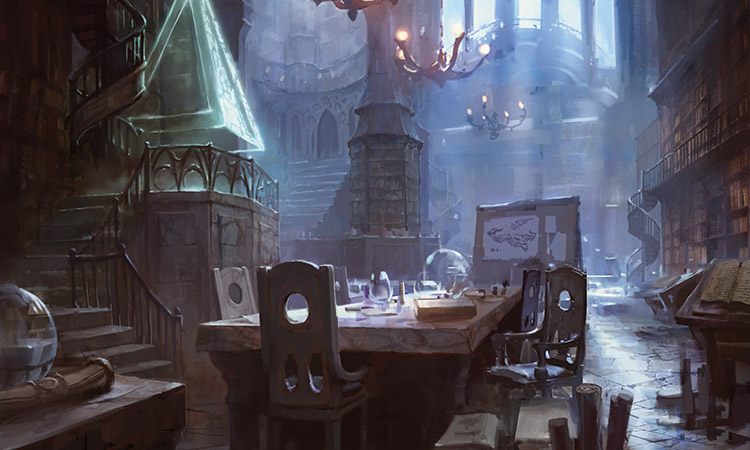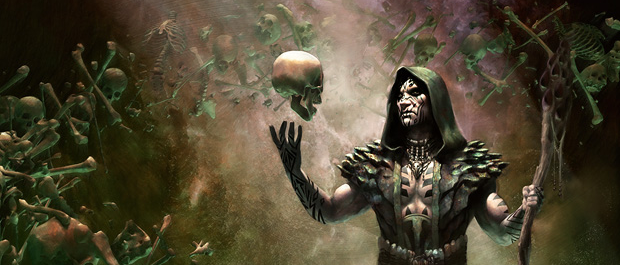Magic Origins has been a great limited set. It deserves a top ten. I haven’t done one for a few sets, but no time to bring it back like the present!
In case you missed some of my classic top tens, this is not a power level ranking. Not exclusively, at least. My grading is holistic. There are any number of reasons a card can be one of my favorites from a set. Read on to see what I mean.
10. [casthaven]Foundry of the Consuls[/casthaven]
I love lands. My favorites are the ones that do something besides just making mana. [casthaven]Foundry of the Consuls[/casthaven], get in the deck!
9. [casthaven]Enlightened Ascetic[/casthaven]
The best sideboard card. I love this kitty. Few things feel better than casting [casthaven]Enlightened Ascetic[/casthaven] to kill a [casthaven]Suppression Bonds[/casthaven], attack with your big creature, and still have a 1/1 hanging back to gloat. In the aggressive white decks, a free 1/1 isn’t too bad either. Cheap 1/1s that do something are already decent sideboard cards as speedbumps against decks with lots of small creatures. When that “something” is blowing up a key enchantment, they are a big game indeed. A big game two or three, at least. If I’m drafting white, I always try to pick up an ascetic. They can be hard to find, hiding out all lonesome and all, but that flavor is perfect for a sideboard card. Meow.
8. [casthaven]Jace’s Sanctum[/casthaven]
Just kidding! What a piece of garbage, this card. I made a deep run in the Detroit Super Sunday Series tournament despite having Jace’s absolutely useless sanctum in my pool. I know they have to make bad rares, and maybe there’s a casual mage out there who really wants another version of this effect. It has a nice illustration, which is something. But I’d rather open [casthaven]Mudhole[/casthaven] than this gigantic turd. I’m not sure I can say anything worse about a card. Thanks for that opportunity, [casthaven]Jace’s Sanctum[/casthaven]. It earns you a spot in my Origins top ten! Right, Tarv? Tarv?
7. [casthaven]Gideon’s Phalanx[/casthaven]
What’s better than a seven drop that wins the game? How about a seven drop that wins the game at instant speed. Half the times I’ve cast this card I got an immediate concession, and the other half I won a turn or two later anyway. Yes, you often die before you can cast it. Yes, it is bad against fliers. Yes, you are a killjoy.
6. [casthaven]Volcanic Rambler[/casthaven]
Hello, [casthaven]Scholar of Athreos[/casthaven]. Ok, not quite. [casthaven]Volcanic Rambler[/casthaven] is a lot worse. It costs twice as much mana and doesn’t gain life. It is a 6/4 though, which is big for Magic Origins, and it wins long games of sealed. People think it sucks, and in draft it mostly does. But I won a crucial sealed game because I knew how dangerous my opponent’s rambler was. I squeaked out a victory by outracing, just barely, and I don’t think a lot of players would have realized how urgent it was win before rambler death. There are better ways to win a game of sealed, but that’s the thing about sealed: you don’t always have better ways. Recognizing the power of unpopular cards in sealed is one of the keys to consistently putting up day two or top eight records in large tournaments.
The art also has an odd Japanese temple feel to it, even though I think it’s supposed to be more of a giant warthog. That sweet ambiguity is worth a shout.
5. [casthaven]Topan Freeblade[/casthaven]
Boring yet amazing. [casthaven]Topan Freeblade[/casthaven] is the iconic card of Magic Origins limited. It’s the best common in the best color. Whenever your opponent taps two mana on turn two, you hope it’s something worse than freeblade. There are ways to deal with it, and it isn’t amazing to draw late. That, along with its supreme boringness, puts it down here at five. Still, you have to respect it. All white draft decks want two or three, and any sealed pool with multiple copies will probably end up playing white.
4. [casthaven]Managorger Hydra[/casthaven]
On day one of Grand Prix Dallas, I won a game after mulliganing to five cards. I never played a fourth land. All I did was play [casthaven]Managorger Hydra[/casthaven] on turn three and follow it up with more cheap spells. The game wasn’t even that close. It is possible to beat a hydra, but not easy. It takes almost no effort to win with one.
There’s not much else to say. It was the lamest of the three playmat images at Grand Prix Detroit. My deck in Detroit was so good that we put the [casthaven]Managorger Hydra[/casthaven] in Sean’s deck. I kept the [casthaven]Abbot of Keral Keep[/casthaven] playmat.
3. [casthaven]Hangarback Walker[/casthaven]
It’s clear I don’t bias these rankings very heavily toward power level. If I did, these lists would be very different, and [casthaven]Hangarback Walker[/casthaven] would be number one. With a thopter. In my last sealed PPTQ, my deck went from solid to great when I saw this card in my pool. It’s been powering up decks in all constructed formats, even making an appearance in the finals of the Vintage Championships. That’s [casthaven]Treasure Cruise[/casthaven] and [casthaven]Delver of Secrets[/casthaven] territory.
I don’t think the Walkencopter is getting banned any time soon. It is here to stay. If you are fortunate enough to pick one up in limited, you will be here to stay in the tournament for many rounds. And if you are unfortunate enough to face one down in limited, you are not going to be here to stay much longer. It’s at its worst when a big ground creature is irrelevant and you can’t find a way to turn it into thopters. That has happened to me once, and I lost. So it goes. Even if you assume that will happen to you once per nine round tournament, [casthaven]Hangarback Walker[/casthaven] is still adding positive win expectation to your deck over those nine rounds. You always want it in every limited deck. Plus you get the bonus of a free $15 bill that is likely to appreciate over the years. Sounds like a deal to me!
2. [casthaven]Bounding Krasis[/casthaven]
I really hate losing to [casthaven]Splinter Twin[/casthaven] in Modern. Fortunately, [casthaven]Bounding Krasis[/casthaven] isn’t quite good enough for that deck. I do like swinging limited races in my favor, though, and this card does that swimmingly. Or slitheringly. Or both, I guess. It’s a fishizard. I bet it swims in the waters near the Springfield nuclear power plant. Zutroy here is as American as apple pie! Wait, what?
For a number of recent limited formats, blue-green decks have been very powerful. Origins continues Wizards’ recent effort to tone that down a bit. But they sure threw Simic a bone with this gold card. Plus in draft, a bad color combination can end up great when nobody wants to draft it. The green cards in Origins are a little too small on average to take advantage of blue’s tempo. [casthaven]Send to Sleep[/casthaven] isn’t good in a deck with tons of creatures. There’s no sweet payoff like [casthaven]Trained Condor[/casthaven]. But there is [casthaven]Bounding Krasis[/casthaven], and thank Yeezus for that!
1. [casthaven]Deadbridge Shaman[/casthaven]
I have been a fan of the shaman from day one. Apparently I don’t love [casthaven]Deadbridge Shaman[/casthaven] quite as much as Yuuya Watanabe, who took it first pick of his world championship draft over [casthaven]Soulblade Djinn[/casthaven], but I understand why Yuuya made that pick. At worst, your opponent jumps through some hoops and trades a single card for your shaman. It’s a 3/1 for three mana in black! That card is already reasonable in most limited formats, and Magic Origins does not especially punish big one-toughness creatures. [casthaven]Eyeblight Assassin[/casthaven] and thopter tokens are the big impediments, but the deck with [casthaven]Deadbridge Shaman[/casthaven] probably has the [casthaven]Eyeblight Assassin[/casthaven]s too.
[casthaven]Deadbridge Shaman[/casthaven] is great on offense, great on defense, great at grinding out a long game, and great at making your opponent shake their head. It trades favorably with [casthaven]Topan Freeblade[/casthaven] or the trick they use to keep the freeblade alive. And if you happen to have the rakdos sacrifice deck, you can even make them discard at instant speed. [casthaven]Disperse[/casthaven] and [casthaven]Claustrophobia[/casthaven] are the only removal spells that are “good” against it. Magic Origins draft is a fast format with the tools to force games to go long. Deadbridge Shaman excels in both situations. It is the perfect card for Origins limited.
And there you have it. Let me know what you think! I’ll be slinging sixty cards at Grand Prix Oklahoma City this weekend. (Gross, I know, right?) Come say hello!
Carrie O’Hara is Editor-in-Chief of Hipsters of the Coast.





